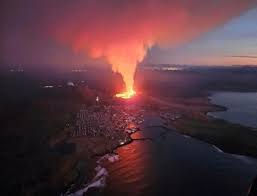Indonesian authorities issued a stern warning on Wednesday, cautioning about the heightened risk of tsunamis as the eruption of Mt. Ruang escalates. The National Agency for Disaster Countermeasure (BNPB) disclosed that the volcanic activity in North Sulawesi province had reached its peak status after days of intensification.
BNPB reported that Mt. Ruang had undergone a series of explosive eruptions, projecting a towering ash column exceeding one mile from the summit on Tuesday, expanding to one-and-a-half miles the following day. Another explosive eruption occurred on Thursday, accompanied by seismic tremors and thunderous noises, propelling a dark ash cloud nearly two miles into the sky.
The agency highlighted the perilous situation, noting ash rain containing stones and debris that reached settlements along the Tagulandang coast. Multiple individuals sustained injuries from airborne rocks and received urgent medical attention, as confirmed by the Sitaro Regency Regional Disaster Management Agency.
Residents within a four-mile radius of the volcano, particularly those on Tagulandang Island, were urged to evacuate immediately. Over 11,000 people have been instructed to leave their homes, with coastal inhabitants additionally warned of potential tsunami threats stemming from volcanic collapses into the sea.
The apprehension regarding tsunamis is rooted in the tragic events of the 1871 Ruang eruption, vividly recounted by eyewitness Adolf Bernhard Meyere in a Nature journal publication. Meyere described the cataclysmic occurrence as “frightful,” recounting how within minutes, a massive sea-wave engulfed the shores of Tagoelanda, devastating three villages and claiming 416 lives.


















